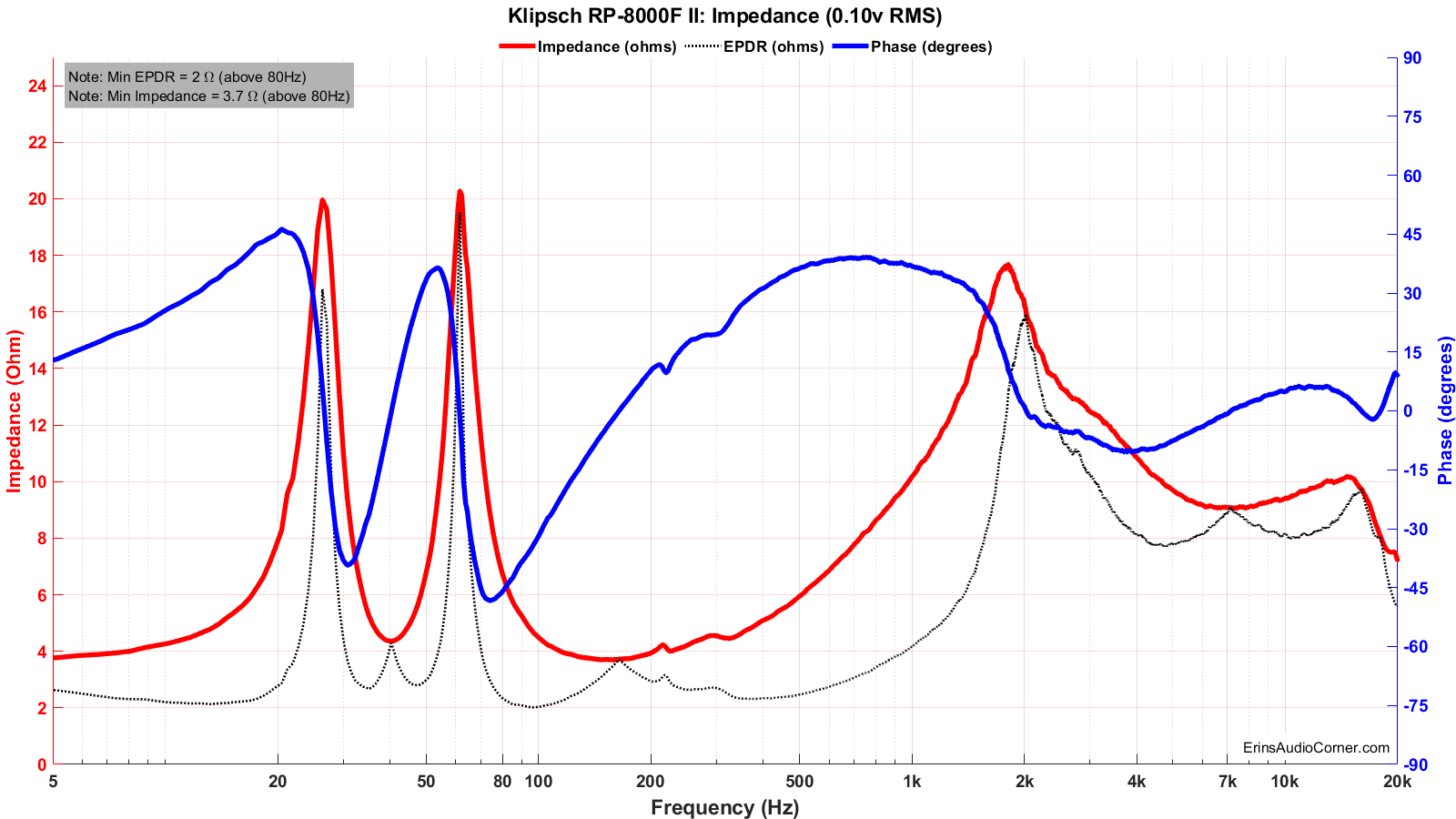OK I should check before I shoot my mouth off!! that RP600M is NOT an easy speaker to drive - it drops to 3 ohm in the woofer crossover zone...
On the other hand here is the impedance chart for the RP800F (floorstander):

This is what I was expecting to see - sure there are ups and downs, but it bottoms out at just over 5ohm .... not too bad especially given that the speaker is high efficiency (98db SPL/wm )
Whereas the RP600M bookshelf speaker - from the same series... bottoms out at 3 ohm... which may indeed cause issues. When I say issues, my own Gallo speakers have around 3 ohm at the same point ... woofer crossover - my experience was that the amp in my Integra DRX 3.4 (siblink of the Onkyo NR7100) started to sound confused - the soundstage collapsed, and detail was hard to discern .... - when I used the Pre-Out into amps more suited to a difficult speaker - it cleaned right up and sounded the way it should... - so it didn't go into protection mode as per the testing that Amir did, but it certainly did not sound its best!
Clearly it pays to investigate the actual detail specifications of the speakers you are planning on getting!
To make things more difficult - these types of charts are seldom publicised by the speaker manufacturer - you usually find them in technical review articles... and of course not all modes are reviewed.
The chart I posted here is from: https://www.audioholics.com/tower-speaker-reviews/klipsch-rp-8000f
Additionally - surround and height speakers are usually less demanding than the mains... so I run the F/C/R on external amps, and the other speakers from the AVR - taking the main load off the amp, leaves a lot more current to drive the rest of the speakers - which it seems to do just fine!
On the other hand here is the impedance chart for the RP800F (floorstander):
This is what I was expecting to see - sure there are ups and downs, but it bottoms out at just over 5ohm .... not too bad especially given that the speaker is high efficiency (98db SPL/wm )
Whereas the RP600M bookshelf speaker - from the same series... bottoms out at 3 ohm... which may indeed cause issues. When I say issues, my own Gallo speakers have around 3 ohm at the same point ... woofer crossover - my experience was that the amp in my Integra DRX 3.4 (siblink of the Onkyo NR7100) started to sound confused - the soundstage collapsed, and detail was hard to discern .... - when I used the Pre-Out into amps more suited to a difficult speaker - it cleaned right up and sounded the way it should... - so it didn't go into protection mode as per the testing that Amir did, but it certainly did not sound its best!
Clearly it pays to investigate the actual detail specifications of the speakers you are planning on getting!
To make things more difficult - these types of charts are seldom publicised by the speaker manufacturer - you usually find them in technical review articles... and of course not all modes are reviewed.
The chart I posted here is from: https://www.audioholics.com/tower-speaker-reviews/klipsch-rp-8000f
Additionally - surround and height speakers are usually less demanding than the mains... so I run the F/C/R on external amps, and the other speakers from the AVR - taking the main load off the amp, leaves a lot more current to drive the rest of the speakers - which it seems to do just fine!

